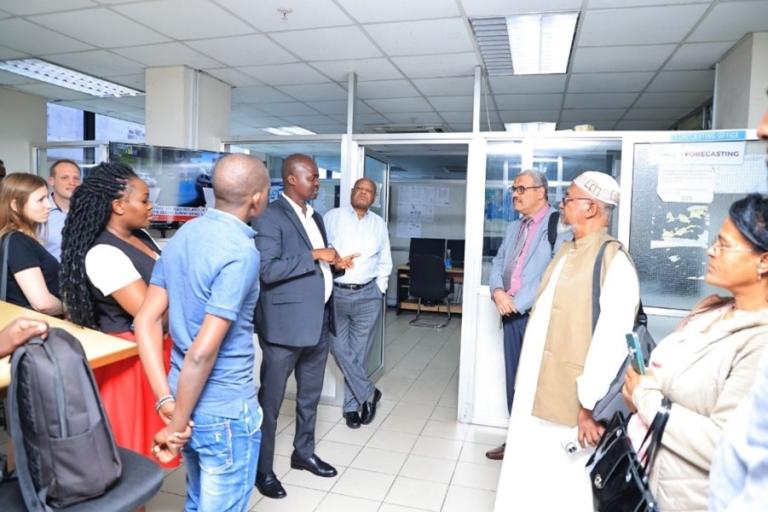Eastern Africa Ramps Up Severe Weather Preparedness

The WMO Severe Weather Forecasting Programme (SWFP) for Eastern Africa will be stepping up efforts to enhance impact-based forecasting and early warning services following a pivotal meeting in Tanzania from 14 to 17 May. The SWFP-Eastern Africa Management Team meeting identified capacity gaps for improving severe weather forecasting and Early Warning Systems, especially in its newest Members, Djibouti, Somalia and Sudan, in supports the Early Warnings for All initiative. Its main outcome is the updated Regional Severe Weather Operational Plan in support of the Early Warning for All initiative.
The Management Team co-chairs, who represent the WMO Regional Specialized Meteorological Centres (RSMCs) for Severe Weather Forecasting (SWF) in Nairobi and Dar es Salaam, led the meeting. Representatives of the WMO World Meteorological Centres in Exeter, Washington and Offenbach and the WMO Regional Training Centre (RTC) Kenya leant support to the proceedings. The SWFP focal points from the National Meteorological and Hydrological Services (NMHSs) of Burundi, Djibouti, Ethiopia, Kenya, Rwanda, Somalia, South Sudan, Sudan, Uganda, and United Republic of Tanzania were funded through the Finnish Meteorological Services (FINKERAT) and Climate Risk and Early Warning Systems (CREWS) projects for East Africa and Horn of Africa.
The Management Team discussed the Numerical Weather Prediction (NWP) tools and products the WMCs and RSMCs had provided to the NMHSs to enable them to in turn provide severe weather forecast and warning services in their countries. There was a shared sense of urgency and commitment to strengthen collaboration to better protect lives and property from the impacts of severe weather through the implementation of people-centred Multi-Hazard Early Warning Systems (MHEWS), the provision of impact-based forecasts and warnings that are accessible and understandable to the public and by assuring that these reach the most vulnerable communities. The Tanzania Meteorological Agency (TMA) showcased their experiences with Early Warning Systems and facilitated an exchange of experiences on developing or implementing national roadmaps for strengthening MHEWS.
The meeting assessed emerging needs for capacity building through targeted training initiatives to enhance the skills of operational forecasters across the subregion. It further looked at how to better support NMHSs in fragile and conflict-affected States that are especially vulnerable to severe weather events. WMO stressed its commitment to providing tailored support to these countries and its plans to facilitate customized in-country and regional training at RSMC Nairobi. By building local capacity and strengthening regional collaboration and data exchange, SWFP-Eastern Africa can ensure that accurate and timely weather information is always available, even in data-sparce countries.
The participants developed a road map under the Eastern Africa Severe Weather Operational Plan with practical measures to ensure the sustainability and effectiveness of training activities. The Management Team aims to improve collaboration between the NMHSs and RSMCs to enhance communication and to continuously improve forecasting and warning tools and methods. Three key areas were identified for further technical advancements:
- Developing new risk indices for lightning, hailstorm, frost and heat stress hazards
- Enhancing data assimilation and automated data sharing via the Global Telecommunication System (GTS)
- Enforcing national forecast verification, data exchange and feedback to RSMCs via web-based reporting mechanism.
The agreed actions mark a significant milestone in the ongoing effort to strengthen Early Warning Systems in Eastern Africa.


